World Investment News | Create account
An International Petroleum Group 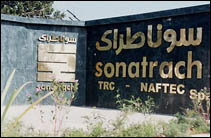
Sonatrach is the Algerian oil and gas company. According to the Petroleum Intelligence Weekly, it is ranked as the twelveth company in the world. It is the first oil company in the Mediterranean, the fourth world largest exporter of natural gas and the second one for LPG.
Upon its creation in december 1963, Sonatrach role was, essentially, to contribute in the national development of Algeria. It was mostly targeted to generate external payment means, but also to meet the existing and future hydrocarbons requirements of Algeria.
For purposes of maximizing the long term value of the Algerian hydrocarbons resources, Sonatrach undertook a tremendous development of activities. Production has been multiplied by four since 1970 and is expected to be twice as much by 2007. 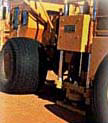 Significant assets - A highly qualified human potential. - A very competitive and attractive law on hydrocarbons. - An important reserve base. - Sedimentary basins with a high potential and still largely under-explored. - An expertise of thirty years operations in field exploitation and development. - A great experience in gas industry. - A privileged geo-economic situation, neighbouring the important European Union market and open to the remainder of the world. - A most positive partnership track record.
With the new bylaws adopted in 1998, the role of Sonatrach will focus on thefollowing strategic actions: . prospection, exploration and exploitation ; . development, operating and management of transportation, storing and loading facilities ; . transformation and refining ; . marketing ; . natural gas liquefaction, processing and valorization of gaseous hydrocarbons ; . setting up of any form of joint-venture activities inside and outside Algeria, with Algerian or foreign companies ; . a constant supply of hydrocarbons for domestic purposes ; . the search for the promotion and the valorization of any other energy form and source ; . the development of any activity being directly or indirectly connected with the hydrocarbons industry. 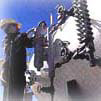 The strategic objectives of Sonatrach are based upon - A continuous control over its core business. - The reinforcement of its management and technological capacities. - A real partnership and international expansion. - The diversification of its activities portfolio.
Sonatrach is, today, the driving engine for the Algerian economic development. It is not only the national company generating revenues for the state, but it is also, and mostly, a performing industrial and services pole. Early 1998, Sonatrach Group was commissioned by the Energy National Council to cover a whole range of new activities such as refining, petrochemicals, distribution and oil services. As a consequence of that, Sonatrach, today, holds the entirety (100 %) of the capital in the distribution, refining and petrochemicals companies: NAFTAL, NAFTEC and ENIP. It also has a 51 % stake in the capital of the oil services companies: ENGTP, ENAFOR, ENAGEO, ENTP and ENSP.
 Sonatrach's medium-term commitment is to reach significant success in downstream activities and mainly in the petrochemical industries using natural gas and LPG as feedstock. Sonatrach extensive experience over the entire oil industry chain made possible, and at the same time necessary, the expansion of its activities towards international investment schemes and export of services, both upstream (prospection, exploration) and downstream where real joint-venture opportunities exist. The company's commitment to establish a real process of modernisation and expansion, translates the ambition of Sonatrach to adapt to the world oil industry changes and to reinforce its dynamic position for the next century.
INDEED, THE 1990 DECADE WAS THAT OF AN INTENSIVE EXERCISE OF PARTNERING PRACTICE WITH, AS A PRIME OBJECTIVE, TO CHANGE PARTNERS "MIND SET" ABOUT THE ALGERIAN UPSTREAM. This opening up of the oil upstream to international partnership is already translating today into remarkable results: in less than one decade, the Petroleum Algeria which was absent from oil companies exploration objectives has become the country where most hydrocarbons discoveries are made in the world. The Berkine Basin, a new petroleum province with a concentration of giant fields, is a striking demonstration of partnership contribution and its multiple benefits. On the other hand, the incentive of competitively has been beneficial to Algerian oils services companies and some of them have already undertaken remarkable technological leveling and significant mutations in their managerial practices. These companies, which are now within Sonatrach Group, have shown their capacity to capture their share of the market in a competitive environment. Indeed, the 1990 decade was that of an intensive exercise of partnering practice with, as a prime objective, to change partners "mind set" about the Algerian upstream. In parallel, this approach required an internal adaptation inside the company; in order to have a real corporation culture with managers and technicians becoming familiar with the partnering perception within the company. (Speech of the chairman and chief executive officer of Sonatrach at the opening session of the 4th JST. April 16th 2000). About 50 contracts have been signed since 1987. Whereas this number is appreciable, it is, yet, below owe expectations, when put into perspective with owe competitive achievements. To date, some twenty oil companies are operating in Algeria: This partnership contribution has been significant: - more than 2.5 billion dollars invested inn exploration ; - 56 discoveries, some of them being giant fields ; - a total hydrocarbon volume in place of about 10 billion barrels oil equivalent. These results largely contributed in the reserves of Algerian reserves, which have reached a level above the one-recorded carry 70's, that is to say, catching up with more than 30 years of conception and export. In addition, these partnership activities have provided a workload to Algerian companies and namely those of the petroleum sector, and have stimulated competitively and better oil serves at a lower cost. These have also contributed in the technology and know how transfer. The main joint ventures are: - The joint-venture with Air Liquid and Air Products for the extraction of helium in Arzew ; - The one with Respell for the production of PEHD in Skikda ; - The latest one with Bast for the production of propylene in Spain, and a captive market for some of own propane exports. Oil services and activities connected with engineering, construction and maintenance are also privileged segments of partnership between the client and the supplier. The interest of Sonatrach, which is transfer of technology and know how, reduction of costs and a better service, converges with the interest of the partner to access a large growing market. Twelve joint ventures are already quite active towards this objective, and other Algerian companies as partners. (Extracts from the communication of Mr. The Vice President SPE in the JST4; April 16th 2000).
CREATING WEALTH WILL BE THE DRIVER OF OUR PARTNERING APPROACH, AND THE PRIME OBJECTIVE OF OUR ACTIVITIES. COMPETITION CRITERIA, COMMERCIAL AND TRANSPARENCY RULES WILL BE OUR REFERENCES IN OUR RELATIONSHIPS AND DEALINGS. THE UPSTREAM AND, MORE AND MORE, THE DOWNSTREAM ARE, CLEARLY, AREAS OF OPPORTUNITIES FOR THIS EVOLUTION OF PARTNERING PERCEPTIONS. The partnering experience we have had over the last 10 years, even if beneficial for us and for our partners, did have some weaknesses mostly due to difficulties of raising the huge resources required by the significant exploration successful operations as well as to the ambiguity of the dual situation of a company having also to act as a public entity. The redefinition of the State spheres of responsibility and the clarification of the means of involvement, both as a public entity and a shareholder, are, in my view, the most fundamental and the most promising perspectives for the hydrocarbons industry in Algeria. A perspective and a context which relieve Sonatrach from constraints while, at the same time, require deep changes within Sonatrach which has to adapt its strategies, its functioning ways and its partnering practices to the current standards of its businesses and the evolution of its environment. That a partnership quality step which does coincide with the objective to turn Sonatrach into a partner no longer required to carry out, on behalf of the State, functions which have so far given it a status of a partner bound to go through, but will rather enable it to become a partner which will be welcome and sought for. In other words, a partner chose for its comparative advantages. I will point out those connected with its good knowledge of the opportunities existing in the Algerian Hydrocarbons industry and its success factors. Efficiency and performance are greater when they are induced by operating practices exclusively targeted towards the requirements of our care businesses. Our goal is to break with the image of control and follow up in favor of a reality of being a partner, on equal footing a partner, which participates, is active and contributes to solutions. Creating wealth will be the driver of our partnering approach, and the prime objective of our activities. Competition criteria, commercial and transparency rules will be our references in our relationships and dealings. The upstream and, more and more, the downstream are, clearly, areas of opportunities for this evolution of partnering perceptions. The numerous and tangible business possibilities will, not only generate more partnership under the schemes practiced so far, but also under more integrated and more advanced cooperation forms. Such an integrated partnering form entails cross interest stakes, which is, in fact, a synthesis between objectives of access to reserves for international companies and our own outsourcing goals. That is already the start for alliances, a form of strategic cooperation motivated by convergence, whether it is around a geographical zone, a segment of activities which would justify a durable cooperation centered around joint coordinated actions and fully benefiting by the capacities and core businesses of the joint partners. Obviously, it is a form of cooperation, which is more appropriate and more adapted to broader business opportunities as well as to the increasing competition generated by the global economy. (Speech of the chairman and chief executive officer of Sonatrach at the opening session of the 4th JST. April 16th 2000).
WE WILL BASE THE OUTSOURCING OF OUR ACTIVITIES ON ALIGNMENT OF INTEREST, COMPLEMENTARITY OF ATTRIBUTES AND SHARING OF RESOURCES WITH OUR INTERNATIONAL PARTNERS, BUT ALSO, ON SYNERGIES WITH OUR NATIONAL PARTNERS. Activities of hydrocarbons processing and particularly petrochemical are less developed and offer all the ingredients for diversified partnership schemes. They can be centered around a project, generalized to a business unit, geared towards targeted markets, specific to the development of a new project or new process, located in Algeria or in "captive markets". It is an industry with an impressive and diversified project portfolio. The range goes from the giant project with large capacity, capital intensive and requiring a high level technology such as the ethylene stream cracking, to units transforming petrochemical products into consumption goods and which are less demanding, more attractive in terms of usage's, less risky and generator of a satisfactory profitability. The concept of partnership is not, indeed, limited to a cooperation restricted to common projects located in the host country. As the springboard for the development of national economic activities, partnering has to be extended to international activities. Outsourcing production and marketing of goods and services is a must for Algerian companies and a challenge for a performing and competitive economy capable of delivering wealth. We will base the outsourcing of our activities on alignment of interest, complementarily of attributes and sharing of resources with our international partners, but also, on synergies with our national partners. As an illustration, the evolutions showing up in the European gas markets urge us to adjust our practices and, through our presence and our involvement in these markets, capture new segments and stabilize our outlets. The first objective requires business participation on said markets, in association with our current partners but also with new player, emerging with the market liberalization. The second objective will be reached through participation in major projects with gas as a feedstock, such as power generation stations. For this purpose, combining Sonatrach and Sonelgaz specific assets, in favor of this gas-electricity convergence, enables us to invest jointly and in cooperation with other partners, in Algeria and outside our borders. (Speech of the chairman and chief executive officer of Sonatrach at the opening session of the 4th JST. April 16th 2000).
· The L.P.G. chain lies over nearly 1.500 km, from the Alrar fields, south-east of Algeria to the northern separation plants in Arzew. The development of this chain is a major strategic objective aimed at valorizing the country's gas resources. In addition to the export of 60 billion cm of natural gas, Sonatrach development plan, over the decade, provides for the doubling of the LPG supplies from the fields, which, by the end of 1999, will go from 5.3 million tons to 9 million tons. · This plan is set around 4 main axes: 1. The development of new gas fields located south-east of Hassi-R'Mel for the recovery of gas, condensate and LPG 2. The recovery of LPG and condensate from operating fields. 3. The construction of an LPG pipeline (LR1) to dispose of the produced LPG 4. The extension of the separation capacities in GP1Z and GP2Z complexes of Arzew. The production of LPG extracted from the fields, subsequently to the gas separation and crude oil processing, accounts for nearly 80 % of the domestic supply, the remainder (20 %) being from Arzew, Algiers and liquefaction complexes GL2Z (Arzew) and GL1K (Skikda). · Up Stream · The development plan of the chain provides for the installation of eleven units for LPG extraction: - Five (5) are completed and operational. Hassi-R'Mel field is the most important one with a production of 3 MT; it accounts for more than 65 % of this production. The other projects are Oued-Noumer, Alrar-West, Hassi-Messaoud, Hamra (in partnership with Total) and Tin-Fouyé-Tabankort (in partnership with Total and Respol). - Two (2) are under construction: Hassi-R'Mel-South and Rhourde-Nouss phase B. - The four (4) remaining one are under maturation: In-Amenas, Ohanet, Gassi-Touil, Rhourde-el-Baguel. · Main extraction processes The liquefied petroleum gas (LPG) which is mainly made up of propane and butane, derives essentially from the processing of natural gas and gas associated with crude oil. Its extraction is made out of butane and propane condensation through compression cycles, expansion and cooling of gas. The expansion, which provides the main part of the product, is achieved through a Joule Thomson valve or a turbine-expander while cooling is generally carried-out through a propane loop and the recovery of frigories available in the unit. · Evolution of the contractual capacities
· Transportation · LPG extracted from fields has being transported through the Alrar-Hassi-R'Mel LPG (LR1) oil pipeline since May 1996. This 988 km pipeline, with a telescopic shape, gathers all the LPG produced in south-eastern fields in order to forward them to the main gathering center of Hassi-R'Mel from where they are removed towards the separation complexes of Arzew through the 24 inches pipeline (the LZ1) which has been on stream since 1984. The LZ1 pipeline is 504 km long and has a transportation capacity of 6M tons/year, in the first stage. A second station planned for 2001 will raise its capacity to 9 MT/year. · Down stream · In order to be inline with the development of the fields production, the capacities of the GP1Z (Jumbo LPG) and GP2Z separation complexes installed in Arzew, to the North, have been significantly expanded during the last decade. · GP1Z Complex This gas complex, GPZ1, which was set up at the beginning of the eighties under the mascot sign of Jumbo, the African elephant, well deserves its qualification as a giant. |
|||||||||||||||||||||||||||||||||||||||||||||||
| Following the renovate of some bottlenecks and as of 1996, the development plan undertaken in 1994, has already resulted in an increase of the production capacity of the LPG project, stage II, lead to two new trains which came on stream in July 1998. Currently, the GPZ1 Complex counts six trains of a capacity of 1.2 million tons/year, or a total annual capacity of 7.2 million tons/year. · GP2Z Complex · The upgrading of the existing trains, which started in 1993, has allowed the doubling of the separation capacity of the GP2Z Complex. This one has gone up from 0.6 MT in 1993 to 1.2MT at the end of the year 1996. This capacity will go up to 1.8 MT per year in 1999. 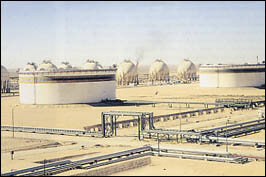 · Owing to an effective marketing strategy. Sonatrach is attempting to promote LPG use on new markets. In this respect, discussions have already taken place with prospective customers to whom the LPG solution seems too be very appealing for the Mediterranean region: Baleares, Sardinia, Cyprus, Turkey… The LPG scopes of application knew a notable development these two last years. Besides the urban domestic market and the petrochemical branch, key LPG consumers so far, a fully expanding activity is gaining grounds: automobile fueling. LPG-fuel, sustained by an incentive tax policy, and pushed to the front by green pressure groups, is likely to witness an upward trend within the energy balance of well-off nations. The key asset of LPG remains the drastic reduction of noxious emissions, considered as the prime concern of the moment. The use of Propane might definitely reduce the sulfur dioxide emissions, cut to 60 % those of carbon dioxide and to 50 % the nitrogen oxides. Power generation is another bright prospect for LPG use. Sonatrach started design studies on the possibility to use LPG in power supply sector, and the results showed that a relatively important part of its new production will be taken over by said sector. This is particularly true when isolated or secluded regions or areas (islands, niches…) are concerned, where there is no opportunity to supplying them by gas pipeline or LNG, LPG, altogether with the combined cycles technology, adding to obvious ecological considerations offers huge advantages. In this respect, discussions have already taken place with prospective customers to whom the LPG solution seems to be very appealing or the Mediterranean region Baleares, Sardinia, Cyprus, Turkey… In order to meet an ongoing growing demand, and to double the LPG export-capacity as early as the next millenary (2001), Sonatrach committed a purchase schedule to endow itself with a modern fleet aiming at answering adequately its customer's requirements. Through its London affiliate "Sonatrach Petroleum Corporation" (SPC), specialized in despondent ship handling, Sonatrach overtakes an 80 % fleet exploitation meant to answers its LPG shipping requirements. Besides the two ships it may avail as an owner (the "Djemila" and the "Nedjma"), SPVC London is also acting as a time ship handler. It also intends to purchase two ships for LPG transport, "Reggane" and "Djanet" which are being constructed and will be delivered respectively by the end of 1999 and during the year 2000. 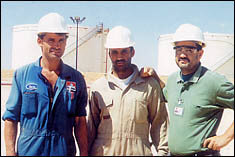 The availability of an important fleet to help export LPG a shipment enables a greater versatility as compared with the production facilities, and a safer supply delivery. This market dynamic prolongs itself downstream in new activities. As early as 1997, a "letter of intent" was signed by Sonatrach and the German Company BASF AKTIENGESELSCHAFT, for the construction of a dehydrogenation unit of 450.000 T/year capacity of propane, and 350.000 T/year of propylene. Being Sonatrach's first international participation in petrochemical downstream activity, this plant will be realized in Tarragona (Spain) on BASF affiliate's site. Sonatrach, departing from its Bethioua's production facilities, will be the sole LPG supplier (Propane-content). For Sonatrach, world second LPG supplier, this long-term cooperation project means opening new prospects to Algerian LPG's, in terms of outlets. At the same time, Sonatrach and BASF are forging a way ahead for a further cooperation in downstream activities in Algeria. As it has already clerically reasserted it in its development scheme, Sonatrach is very much in favor of joining an associate, too invest in a condensate distillation plant and an ethane vapocracker in Algeria.
The area of Gassi Touil is located, 1.000 km to the South East of Algiers. Number of oil and gas wells: 70 - Surface Installations - Mains units: · Gassi Touil oil processing center · Nezia North oil processing centre · Gassi Touil gas processing centre · Gassi Touil gas réinjection unit - Processing Capacity: · Oil (t/d) 3.000 · Gas (cm/d) 20.000.000 · Condensate (t/d) 3.000 · Gas reinjection 5.000.000
The area of Haoud Berkaoui is situated, 760 km to the South East of Algiers and 100 km to the North west of Hassi-Messaoud. It includes the fields of Haoud Berkaoui, Boukhzana, Guellela and Draâ Elamra. Number of oil wells: 120 - Surface Installations - Mains units : · Production battery HP LP MP · Test battery · Pumping station · Water production station · Water injection station · Gas-lift compression station · Associated gas processing unit · LPG production unit · Boosting. - Processing Capacity: · Oil (t/d) 30.200 - Gas (10 cm cubes/d) · Boosting 2.369 · Processing 2.369 · Compression 1.660 · Gas-lift compression 424 - Water injection (cm/d) · Haoud Berkaoui 6.000 · Benkahia 6.000 · Guellala 6.000 · Total 18.000 - LPG (t/d) · Haoud Berkaoui + Guellala 410 · Gas compression (cm/d) 16.200 · Condensate (t/d) 5.430 · LPG (t/d) 2.980
The oil field of Hassi Berkine South (HBNS) is located in the Berkine Basin, 250 km to the South East of Hassi-Messaoud. It has been jointly operated with Anadarko since May 1998. - Number of oil wells: 9 - Surface Installations - Main units: · 1 gas processing center · 2 gas reinjection units - Processing capacity: · Oil (t/d) · Total 7.630 · Water reinjection (cm/d) · Total 18.000 · Gas reinjection (10 cm/d) · Total 8.000
The area of HassiR'Mel is located, 500 km to the South East of Algiers. It includes the field of Hassi R'Mel, Djebel Bissa, Oued Noumer, Aït Kheir, Sidi Merghich, Makouda. Number of oil and gas wells: 200 - Surface Installations - Mains units in the Hassi R'Mel field: · Oil Rim · 5 oil processing center · 1 Pumping station · 1 associated gas gathering station · 5 modules and 2 gas processing units · 2 compression stations · 6 LPG extraction units · 7 condensate stabilization units - Processing Capacity: · Oil (t/d) 2.000 · Gas Processing (cm/d) 286.000.000 · Condensate (t/d) 55.000 · LPG (t/d) 12.000 · Gas reinjection (cm/d) 186.000.000 - Oued Noumer: The sector of Oued Noumer includes the fields of, Oued Noumer (discovered in 1969), Matou Makouda (discovered in 1975), Sidi Mezghich (discovered in 1976) and Aït Kheir (discovered in 1971). The processing capacity is 4.500 t/d of oil and 1.200 t/d of LPG - 16 producing wells - 7 gas injection wells
The area of Hassi-Messaoud is located, 850 km to the South East of Algiers. Includes the fields of Hassi-Messaoud, El-Gassi, El-Agreb, Zotti, El-Borma, Mesdar, Rhourde Chegga, Hassi-Guettar. Hassi-Messaoud field is one of the biggest fields in the world. The thousandth well was drilled in March 2000. Number of oil and gas wells: 650 Number of gas injection well 100 Number of water injection wells 30 - Surface Installations
- Satellite unit 6 2 - Crude separation unit 1 1 - Gas booting unit (MP LP) 4 4 - Condensate and LPG recovering unit 2 1 - HP gas reinjection unit 11 2 - Water injection unit 1 2 - Refineries 2 - Processing Capacity: · Oil (t/d) 47.000 · CINA 36.000 · TOTAL 83.000 - Condensate (t/d): · CIS 29.400 · CINA 3.000 · TOTAL 32.400 - LGP (t/d): · CIS 5.500 · CINA 1.000 · TOTAL 6.500 - Gas reinjection (10 cm cubes/d): · CIS & CINA 47.000 · TOTAL 41.800 It will reach an amount of 61.800 in the 12/31/2000 - Water injection (cm/d): · CIS 12.000 · CINA 54.000 · TOTAL 66.000
The area of In Amenas is located, 1.600 km South East of Algiers over a surface exceeding 30.000-km² it includes the following fields, Zarzaitine, Edjeleh, Tiguentourine and El-Abed Larache. Number of oil and gas wells: 300 - Surface Installations · Zarzaitine processing center 9 · Zarzaitine pressure maintenance unit · Edjelleh processing centers · Tiguentourine processing centers · El-Abed Larache processing centers · FGL unit - Processing capacity: · Oil (t/d) 52.400 · Associated gas gathering unit 4.5 x 10 cm/d - Water injection (cm/d) · Zarzaitine 39.500 · Edjelleh 4.500 In Amenas GAS jointly with BP. The objective of the contract is the development of gas in the field of Zarzaitine as from 2003.
The area of Tin Ohanet is located 1.500 km to the South East of Algiers over a surface of 18.000 km². It includes the following fields: Askrem, Guella, Timedratine, Acheb, Edegen, and Tamadanet. - Number of oil wells: 59 - Surface Installations There are 2 storage and crude oil separation centers in Ohanet, Askrem, Guella, Timedratine, Acheb, and Edegen. - Processing capacity: · Oil (t/d) 8.500 - Tamdanet: The oil field of Tamadanet is located in the Illizi basin, about 40-km to the South East of Ohanet. This field is jointly operated with Petrocanada. - Number of oil wells 3 - Surface installations: - Main unit: · 1 oil processing center processing capacity (t/d) 1.920
The area of Rhourde Nouss is located, 1.200 km to the South East of Algiers and 100 km to the North west of Hassi-Messaoud. It includes the following fields: Rhoude Nouss, Rhourde Hamra and Hamra. Number of oil and gas wells: 118 - Surface Installations - Mains units: - Oil processing center including: · 3 separation batteries HP (high pressure) · 3 separation batteries MP (mid pressure) · 2 separation batteries LP (low pressure) · 1 test battery HP · 1 test battery MP · Pumping station - Gas processing center including: · LPG extraction unit · Condensate stabilization unit. - Processing Capacity: · Oil (t/d) 1.600 · Gas (10 cm cubes/d) 51.000.000 · Condensate (t/d) 8.400 · LPG (t/d) 3.800 · Gas reinjection (cm/d) 32.000.000 - Hamra: The field of Hamra is jointly operated with Total. Put on stream in 1995/ - Complex capacity: - 2 processing trains with a total capacity of 15 million STD cm/d - Condensate: 2.800 t/d - Gas reinjection 13.1 million STD cm/d - LPG: 1.350 t/d
The oil field of Rhourde El-Khrouf is located in the Berkine Basin, about 170-km, North East of Gassi Touil and 80-km to the South East of Rhourde El-Baguel. Gas reinjection and oil processing plants were put on stream 06/01/1996 in partnership with Cepsa. - Number of oil wells: 9 - Surface Installations - Main units: · 1 oil processing center · 2 gas reinjection units - Processing capacity: · Oil (t/d) · Total 2.500 · Gas reinjection (10 cm/d) · Total 8.000
The oil field of Rhourde El-Baguel is located, 80 km to the South Esat of Hassi-Messaoud. Since 07 January 1996 the field has been jointly operated with Arco, under the joint operating organization denominated SONARCO. In April 17 2000, Sonatrach acquired 40 % of Arco's interest and in April 18 2000 BP acquired the share of Arco under its merger process. Number of oil wells: 45 - Surface Installations - Mains units : · 1 oil processing centre · 2 gas reinjection centre - Processing Capacity: · Oil (t/d) · Total 15.000 · Gas reinjection (10 cm cubes/d) 24.000
The area of Stah is located in the Illizi basin, 1.700 km South East of Algiers. It includes the fields of Alrar, Stah and Mereksen. Number of oil and gas wells: 110 - Surface Installations - Mains units: · Oil processing centre at Stah and Mereksen · Boosting of associated gas at Stah and Mereksen · Water injection units at Stah and Mereksen · Pumping station at Stah and Mereksen. - Alrar gas processing centre which includes: - 1 gas processing unit - 1 gas compression unit - 1 condensate stabilization unit - 1 LGP extraction unit. - Processing Capacity: · Oil (t/d) 1.2000 · Associated gas boosting (cm/d) 2.320.000 · Gas reinjection (cm/d) 24.000 · Water injection (cm/d) Contractual Stah + Mereksen 21.000 · Gas compression (cm/d) 16.200 · Condensate (t/d) 5.430 · LPG (t/d) 2.980
The area of Tin Fouye Tabankort is located South East of Algiers. It includes the following fields: Tin Fouye Tabankort, Tin Fouye, Hassi Mazoula and Tifernine. Number of oil and gas wells: 183 - Surface Installations - Mains units: - Production battery HP/LP · Pumping station · 2 water production stations (pressure maintenance) · 1 water injection station (pressure maintenance) · 1 gas-lift compressing station · 1 associated gas gathering and processing station - Processing Capacity: · Oil (t/d) 35.000 - Gas (10 cm cubes/d): · Processing 18.000 - Water injection (cm/d) · Tin Fouye Tabankort 21.000 · Amassak 6.000 · Total 27.000 - Partnership Gascap from tin Fouye Tabankort is jointly exploited with Total and Respol. - Surface installations include: · 1 collecting network · 51 producing wells · 1 processing trains with a total capacity of 20 million cm/d. · Condensate (t/d) 2.650 · LPG (t/d) 2.100 · Dry gas (cm/d) 18.000.000 2 turbo compressors for the transportation of dry as towards the pipelines removing dry as to Hassi R'Mel transporting it to the gas pipes, this latter transport it to Hassi R'Mel. The field of Tifernine is jointly operated with Respol Production capacity: 1.600 t/d. |